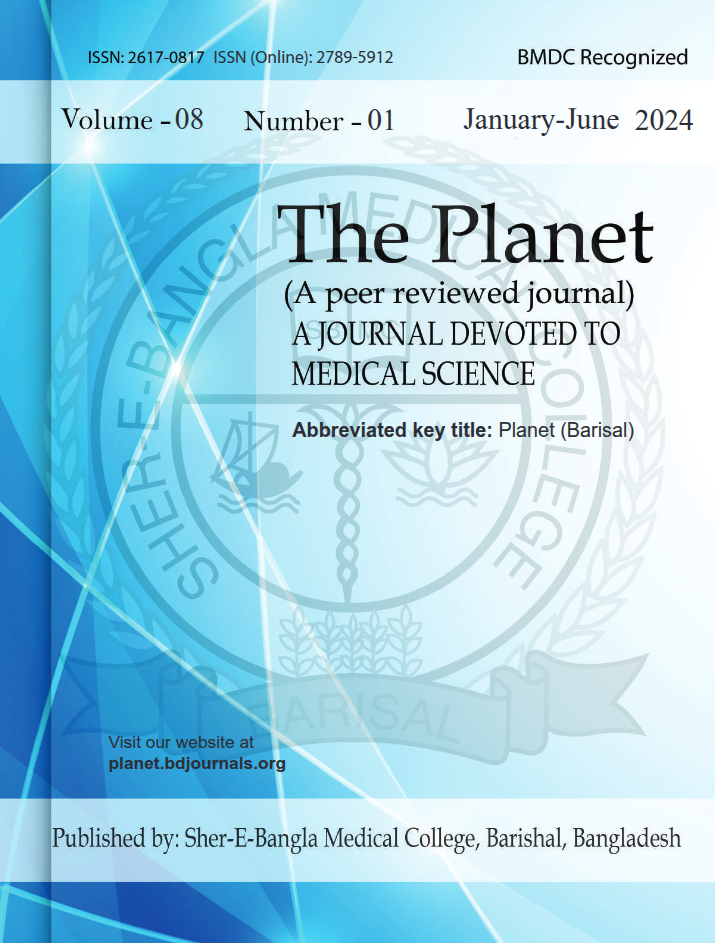Published 28-12-2024
Keywords
- Contraceptives,
- Effectiveness,
- Abortion,
- Delivery
Copyright (c) 2024 The Planet

This work is licensed under a Creative Commons Attribution 4.0 International License.
How to Cite
Abstract
Background: Contraceptive use is a crucial aspect of reproductive health, especially for women recovering from abortion or delivery. Understanding the patterns of contraceptive adoption in these groups can help inform healthcare strategies and improve family planning services. This study aims to explore the contraceptive choices made by women who have recently undergone abortion or delivery. Methods & Materials: The retrospective observational study was conducted at Palash Upazila Health Complex, Narsingdi, Bangladesh from July, 2022 to June, 2023. Data were collected from medical records and structured interviews at selected healthcare facilities. The study population consisted of 110 women of reproductive age who had recently undergone abortion or delivery within the past six months, selected through purposive sampling to ensure a representative distribution from both groups. Data analysis was conducted using statistical software SPSS version 26.0. Result: The results of this study show that post-abortion women were more likely not to use contraception (27.3%) compared to post-delivery women (9.1%) (p=0.019). Permanent contraception was chosen by 9.1% of post-abortion women and 12.7% of post-delivery women (p=0.512). Age, parity, education level, and timing of initiation did not show significant differences in method choice (p>0.05 for all categories), with immediate initiation being most common for permanent methods (58.3%) (p<0.001). Effectiveness was the primary reason for method selection, while cost and side effects influenced non-users decisions (p=0.047 and p=0.032, respectively). Conclusion: This study reveals that contraceptive use patterns vary significantly between post-abortion and post-delivery women, with a higher proportion of post-abortion women not using contraception. Factors such as age, parity, education level, and timing of initiation did not significantly affect contraceptive choices, although immediate initiation was most common for permanent methods. Effectiveness was the leading reason for method selection, while cost and side effects influenced non-users decisions.



